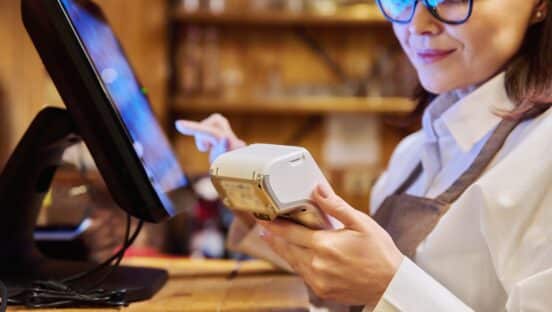In the early months of the COVID-19 pandemic, restaurants dramatically changed their operations to incorporate more off-premises dining options and made significant investments in new technology to support the shift. From mobile apps and online delivery platforms to outdoor WiFi and touchless payment processing technology, restaurants invested in equipment that would help their teams better serve customers in a touchless, socially distanced world. Yet many brands didn’t have time to think about how they should be securing their new technology or their data, leaving them at risk of attacks from bad actors.
“Many companies had been running the same technology stack for years and then had a mad rush to add new technology, which brings vulnerabilities,” says Mark Cline, senior vice president of sales at Netsurion. “Anything that wasn’t previously on a restaurant’s network is at risk, whether that’s a point of sale, a camera, or an HVAC system.”
This makes it critical for restaurants to consider how each new piece of technology might change security demands for the company. Cline recommends assessing how it connects to the rest of the system, where it plugs in, whether someone has remote access to the device, and how traffic flows through it to the rest of the system.
Once leaders understand what a system’s vulnerabilities may be, it’s crucial to upgrade network security. Cline cautions that while many restaurant leaders think their systems are secure because they have firewalls and anti-virus software, that is only the first step in ensuring cyber criminals can’t place malware or ransomware on the system or steal valuable personal information.
“For example,” he says, “many companies assume a good firewall is included in POS software, and it’s true that many POS companies provide firewall protection. However, the firewall often isn’t enough coverage to truly protect a restaurant, or it was put in place five years ago and is out of date.”
However, a firewall alone isn’t enough. Cline says a common misconception is that if a restaurant has a firewall, someone is watching the system to make sure it’s secure, but oftentimes, no one is. To truly ensure a network is secure, Cline says restaurants should focus on endpoint protection, as well as active threat monitoring.
“Many data breaches have been at the point of sale or a back office computer, often because someone downloaded a funny cat video on a back-of-house computer, allowing a virus to get into the system,” Cline says. “Educating team members on how to avoid these risks is a critical first step, but restaurants also need a managed threat monitoring system that can look for suspicious traffic 24 hours a day, identify a threat, block it, quarantine it, and kill it before it’s infected the whole system.”
Restaurant leaders don’t have time to personally review traffic logs 24 hours a day. Instead, a managed threat monitoring system—such as Netsurion’s—ensures professionals are able to review suspicious traffic any time it happens.
Because they run automated bots, attackers have more time to break things than restaurants have time to identify and fix them,” Cline says. “It’s like they never sleep. By monitoring systems 24 hours a day, we can help restaurants catch malicious activity whether it’s 2 p.m. or 2 a.m., and we outline processes with each individual brand or restaurant to prevent future malicious activity.”
Additionally, because Netsurion offers its own hardware box with cell failover, Netsurion can help restaurants with real firewall coverage, PCI compliance, as well as network stability all in one system, taking the burden off restaurant owners and operators.
“At the end of the day, a lot of restaurants look at PCI DSS compliance, firewalls, and other network security products and services as a nice to have, or they think they can do it themselves,” Cline says. “But the truth is that now that restaurants are so reliant on technology, particularly during this pandemic, network security is their livelihoods. Putting in a good system that ensures they are covered any time of the day or night is just as important as monitoring their properties with video cameras or locking a door.”
To learn more about protecting your restaurant’s technology, visit the Netsurion website.













